Eight years ago I sat at my desk at the Eagle on a fall night, talking with Terrance Houle. He was in his studio in Calgary, and we were talking by phone. He is a filmmaker and performance artist, fiber artist and phographer, and a member of the Blackfoot and Anishinaabe (Ojibwe) nations, and he had work that summer in the broad group show Oh Canada at Mass MoCA.
I had seen his life-sized bison standing higher than my head, like a silhouette against the sun, and I wanted to know more.
He told me the work had a performance element to it. He had made it thinking about what a man his age would have known how to do 150 years before. He was thinking about the strength a man would have then, and now, to care for his people and protect them.
I still remember that conversation. I was sitting in the newsroom in an old brick mill, and it was quiet. Any of my co-workers who were not on the night desk had left hours ago. And an artist took time to talk with me across 2,500 miles.
He was telling me about a new work, a film he was making. He was talking with people who had been students at Canadian residential schools. Like boarding schools in America, for many years Canadian schools would take children away from their families and forcibly teach them not to be Blackfoot, or Anishinaabe, or Cree. Houle was asking these students about the places they wanted to be — the places where they felt at home and alive.
Then he talked about a fellow artist in the show at Mass MoCA. He admired her work, and as he talked about it, he taught me to understand it in a new dimension. Ruth Cutland created forms in irridescent gleaming beadwork. They can look abstract, until you know what inspires them. She is Cree, and she was alluding to the microscopic molecules of illnesses that have devastated her people.
That memory is hitting me hard tonight. I am not comparing what’s happening today to the illnesses that moved across the continent between the 1400s and the 1700s — as hard as this is, they were a far greater order of magnitude. But I am thinking now about the stories these two artists gave me, and I am deeply thankful for what put us in touch.
The pandemic we’re in, and the uncertainty it causes, are putting a strain on many artists and museums and creative spaces, small businesses and large ones, and in the last few days local museums have begun to talk about what’s happening.
Last week Mass MoCA sent out a newsletter explaining how they are responding so that they will have the resources to go on. They are having to cut back already, and hard. They have laid off 120 of their 160 staff. That shakes me. And I’ve been thinking about all the reasons why.
I have known this museum half my life.
I know it professionally, because I have written about the creative world in the Berkshires for 20 years, and Mass MoCA has played a substantial role in creating the world I work in. It’s a place where creative life happens. Musicians and artists meet here. Bands and collaborations are born.
It creates its own energy, spontaneous and rare, and I walk through the galleries wanting to write speculative fiction about new worlds. This place makes connections.
And it has moved me at some powerful times. Looking back I can see the museum showing up at turning points in my own life. As I’ve grown and sometimes stumbled, it has made a difference to me.
It’s one of the reasons I’m here.
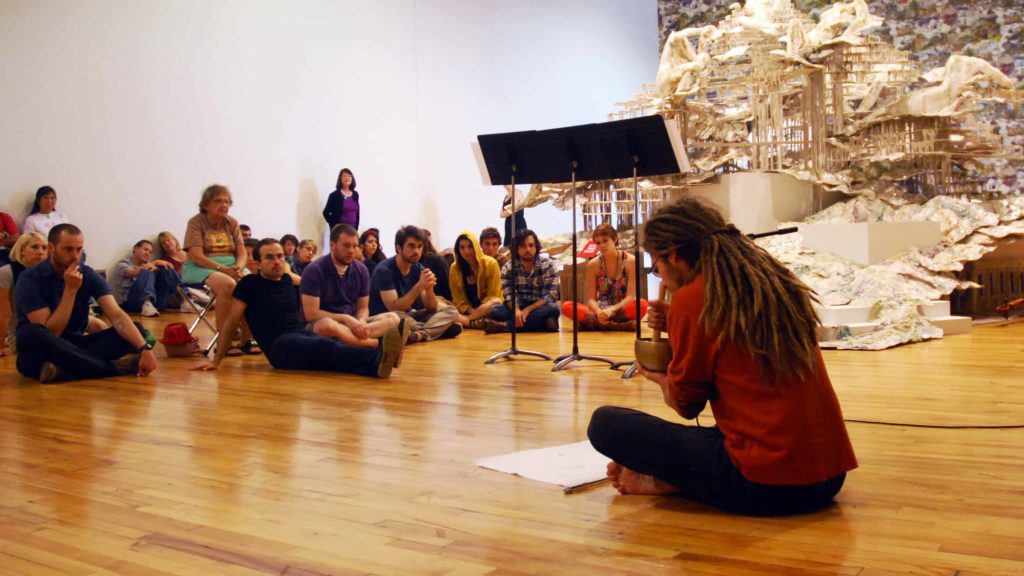
A Bang on a Can musician performs in the galleries at Mass MoCA in North Adams.
21 years ago, I was an intern there. I came to the Berkshires for college, and this was the summer after my junior year at Williams. Summer of 1999. Mass MoCA’s first summer open. The internet barely existed, and I was looking up musicians for press releases and walking through the galleries after hours when Gallery 5 was filled with Rauschenberg prints.
My housemates and I had debates on summer nights about minimalism. Does it matter whether the artist touches the finished work? I still think it does. Gamaliel Rodriguez agreed this winter, when we stood under the upside-down trees and looked through the long window at his 60-foot-long mural outside the Hunter Center. It took him a year to draw a landscape by hand in dark purple ink and gold.
My internship was a good summer. I made friends, and picked wild blueberries on Petersburg pass, and fell in love. And my first memories of the museum are bound up with it. I remember the cameraderie of the crew working out of the top floor of the gatehouse with the door open to let in the breeze.
I loved the old buildings, the wide spaces and tall windows, and the patina on the walls of the rooms that used to be here. One of the tour guides told me that in the long gallery, where the ceiling beams were reinforced by metal cable, a piano tuner had tested to make sure the tension was equal. I loved the idea that this was the kind of place where you could measure the strength of the architecture in musical notes.
That was the first summer I lived in the Berkshires. Mass MoCA was the reason I lived here outside of college and got to know the Berkshires outside of Williams. And so it’s part of the reason I stayed here — why I thought of living here after I graduated.
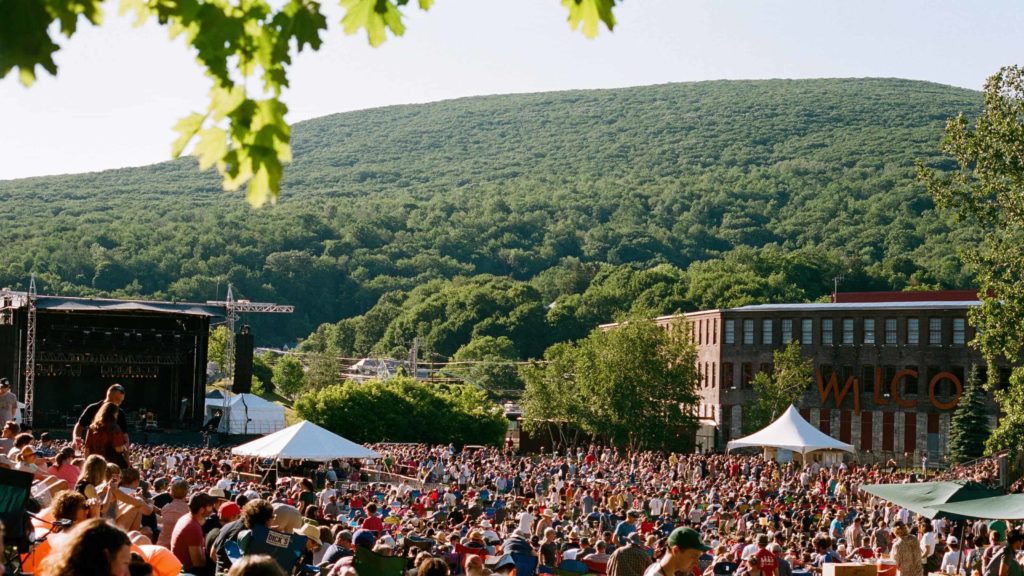
Wilco's Solid Sound festival takes over Mass MoCA and North Adams every two years in June. Press photo courtesy of the museum
20 years ago I was working out of an office on the museum campus, laying out pages for the old Berkshire Advocate. The Advocate was still a free local weekly then, and it got me into journalism. My first job out of college, I was a cub reporter in their Southern Berkshire office. I was one in a staff of two or three in Lenox — my editor, Judith Monachina, is another of the forces who kept me in the Berkshires. And once a week I worked out of North Adams.
I’d come in on Tuesday mornings with a box of Neville’s doughnuts to share. They were usually open 4 to 8 a.m., because they still kept mill-shift hours more than 12 years after the mills had mostly closed, and on my layout day they were open until noon.
12 years ago, I’d left for grad school, and I came back to the Berkshires just after the new year to take on Berkshires Week at the Eagle.
I absolutely loved it. And I had no idea what it would be like. Putting together a magazine a week from May to October, when each one can be up to 40 pages long, is a marathon, even with the most amazing intern imagineable. (Amanda Korman kept me going that summer, and I tapped into the same Williams internship program that had brought me to Mass MoCA to bring her to the Eagle. She became the first of many.)
That first summer, I remember coming to the museum with a friend somewhere around August and walking through Badlands. I can still feel myself breathing the scent of real warm earth from the tiny green-houses, standing head-high to terrariums of ferns.
After awhile, I asked my friend to come outside, because I felt as though I hadn’t gotten out of the office for weeks and I needed earth under my feet, and we sat under the upside down trees, leaning against the brickwork, and talked while I held myself together.
I have so many memories.

Xu Bing's Phoenixes fly in Building 5 at Mass MoCA in 2013. Press photo courtesy of Mass MoCA
7 years ago Xu Bing’s giant phoenixes were flying in Building 5. They hung overhead, and you walked under them looking upwards. They were mythical birds flying, as immense as dinosaur skeletons, a hundred feet long and more made out of construction materials, crests of hardhats. They gleamed at dusk, when the sunset light slanted in the long windows.
6 years ago I walked into the galleries at night to hear Iqbal Ali read his brother’s poetry. One vast room had become many chambers walled with translucent veils, and each room held hazy images. I remember cherry trees blooming in a cemetery, and a ship off the coast of Tel Aviv.
Agha Shahid Ali and Ishar Patkin created these tooms together: a poet from Kashmir and an artist from Israel who had both lived in America for years.
They began with one poem, The Veiled Suite. It was the last poem Agha Shahid Ali wrote before he died of brain cancer in 2001. Iqbal tried to tell me what it was like to walk through those rooms drawn from his brother’s words, more than 10 years later. Seeing them was hard, he said, and breathtaking. When he walked into each room, it engulfed him.
In the room for “Evening,” a poem invoked trees like “the dark ruins of temples,” a sky like a saffron-robed priest, and a beautiful dark goddess with bells about her ankles. She shared her room with a sunset in a stone piazza swept with pigeons.
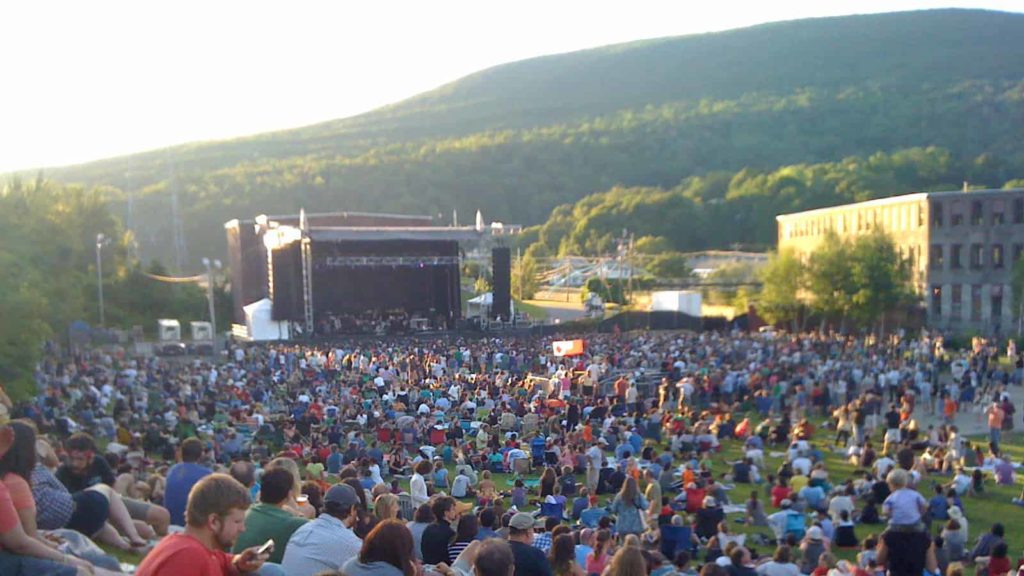
Solid Sound, a music and arts festival curated by Wilco at Mass MoCA in North Adams. Press photo courtesy of Mass MoCA
5 years ago in late June I walked into Solid Sound on the day after I lost my job. I’d been waiting for weeks to hear Richard Thompson — I’d listened to his top songs of the millenium all through grad school. And the museum had let me keep my press ticket. It gave me a place to go. And on that bright, hot day Thompson seemed to be singing a soundtrack for the change that had come out of nowhere and upended my life.
If you’ve been laid off, you know how suddenly and completely the structure you’ve been building for years disappears. The national company that owned the Eagle back then had been struggling for more than a year, but I hadn’t seen it coming. I think of that feeling now, as the structure of the whole community shifts day by day, and I know many people around me are feeling this kind of dislocation.
When I began to navigate a freelance world — with friendship from the Eagle and many other places — Mass MoCA became part of it. Working as part of a team in a newsroom is not the same as working as an entrepreneur and balancing between editors. I stumbled, more than once. And I learned more than one lesson here.
Sometimes I learned by experience, and sometimes I came to Assets for Artists workshops and talked with creative people making a living from scratch.
And I kept finding solace.
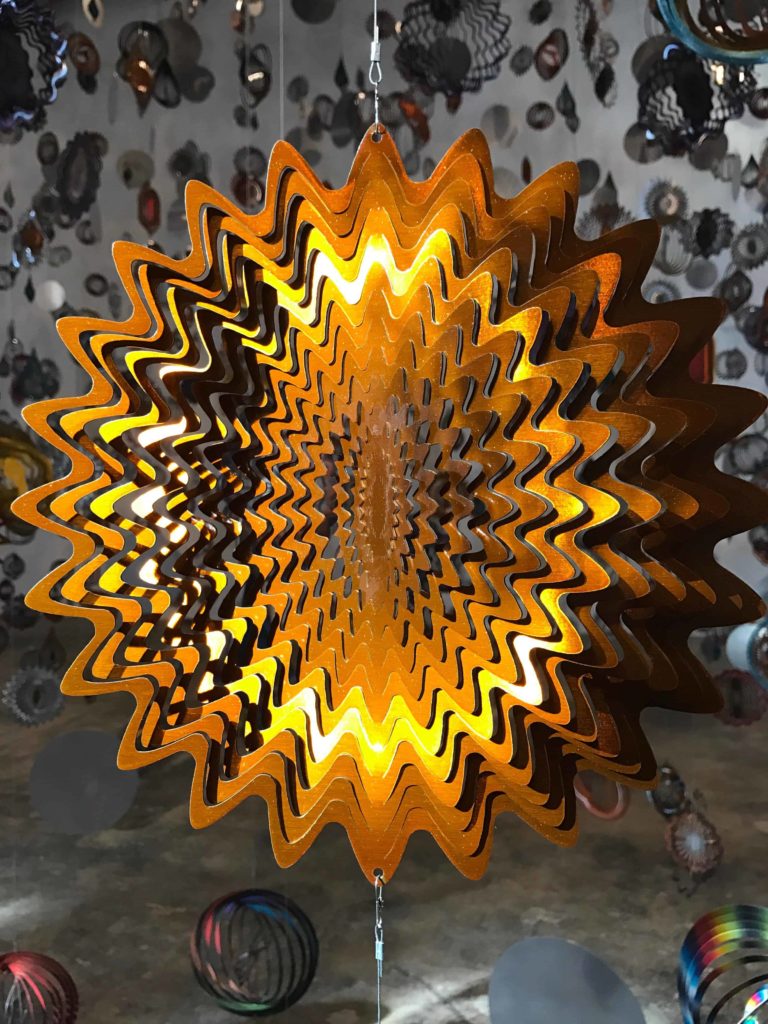
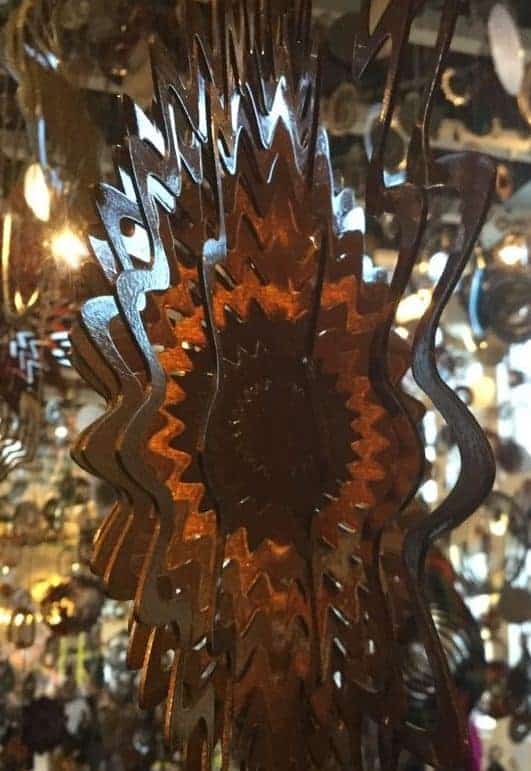
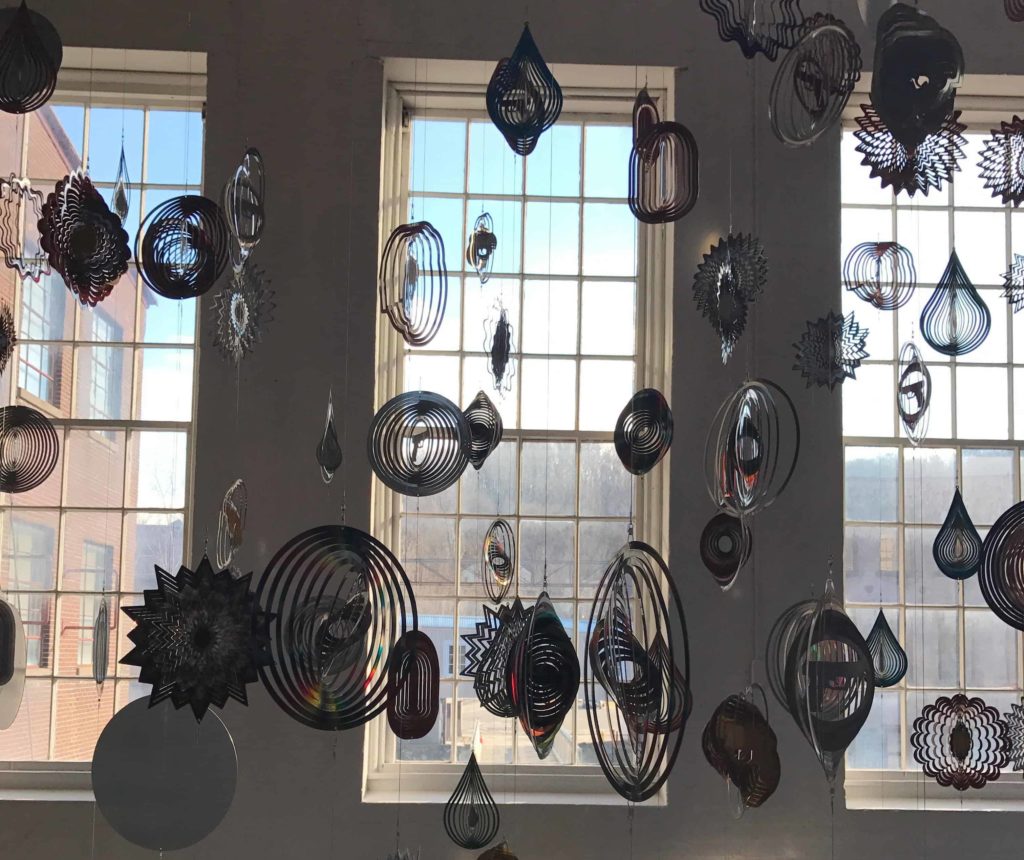
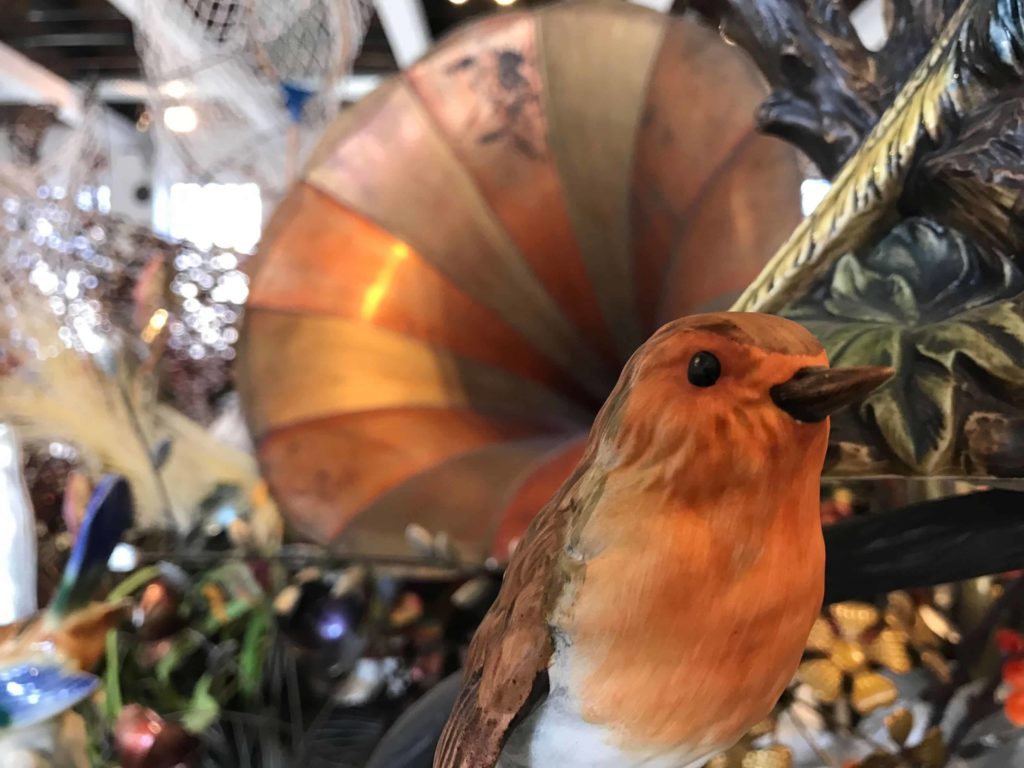
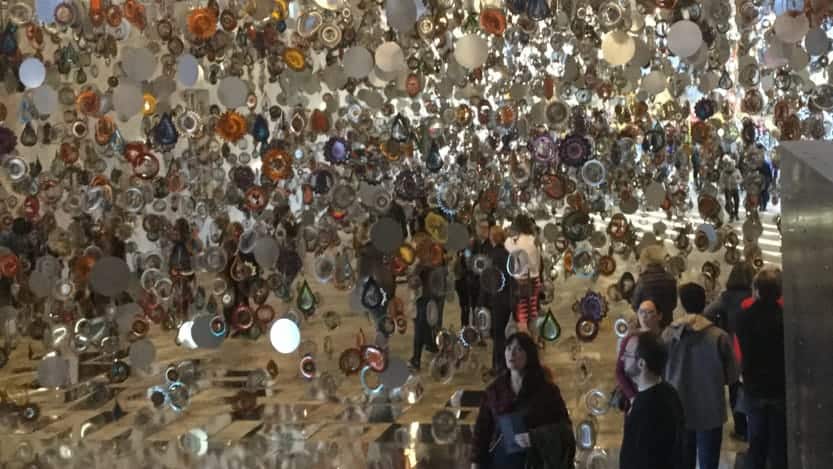
Four years ago I walked into Nick Cave’s opening — and his glittering maze of mobiles shook me to my soles. It was a September and night by 5 p.m. Visitors were speaking French in the lobby, and the galleries were warm with light and voices.
I walked into those gleaming strands, and through them, and on the other side I heard Sereca Henderson on keyboard and Brenda Wimberly, resplendent, singing full-voiced in the long gallery: A change is going to come.
And afterward there was Benjamin Clementine barefoot, singing solo over low keyboard harmonies. He was telling us he had grown up in a hard part of London and taught himself music, sneaked into school to play the old piano until they locked him out, run away from home and busked in the Paris metro.
I can hear his voice rising, lifting, filling the Hunter Center to the back row — and coming to earth on a quiet certainty.
I won’t underestimate who I am capable of becoming.
This museum has given me so many memories. You have let me write so many stories, and talk with so many people, and walk in the courtyards in all weathers. Rhiannon Giddens at FreshGrass offering a new composition, and the actors rehearsing The Head and the Load …
Three years ago, I was walking up a timeline of the universe in the first floor hallway, reading my way from the big bang to photosynthesis and unicellular organisms … and someone touched me on the shoulder. And there was Amanda, my first intern, in town as an artist in residence at the museum, working on her first novel.
A year ago I was writing my first story for the Boston Globe, and professor Stephen Sheppard at Williams College told me that he estimates Mass MoCA brings more than $50 million a year into the local community that would vanish if it were gone.
Mass MoCA played a part in how I pitched that story, how I got the chance to write it, and how I learned to trace the monumental affect cultural and creative institutions have on our local economy. I had felt the energy of our creative places anecdotally since I started on the beat. I’ve felt it in the ground and seen it grow around me. But I had never so thoroughly traced the numbers to measure it, and to prove it.

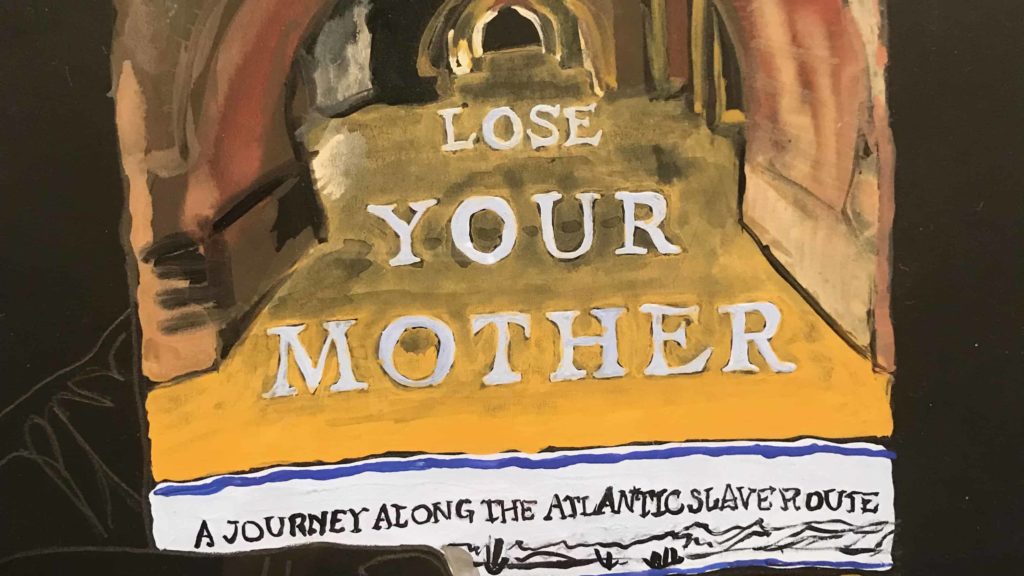
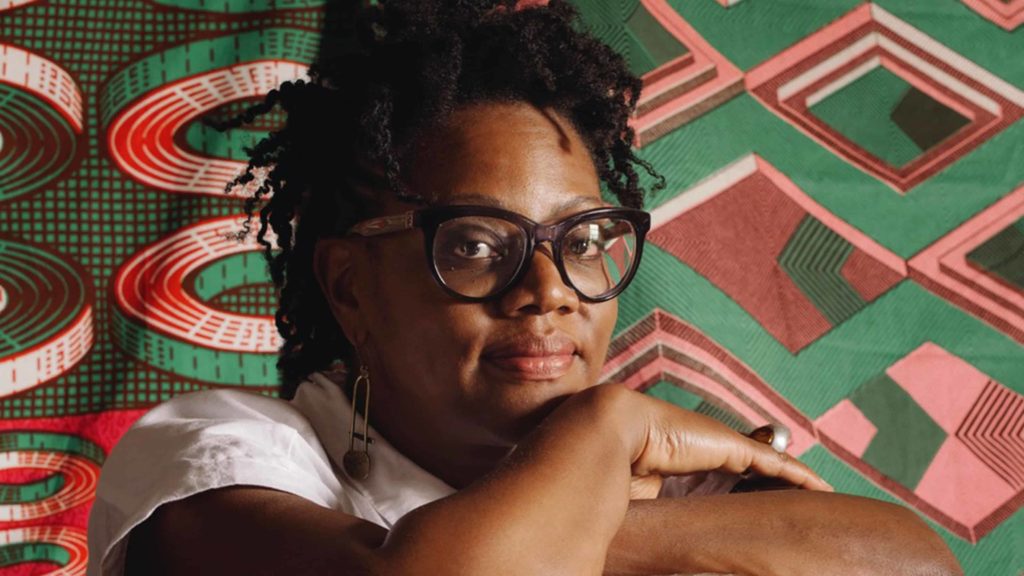
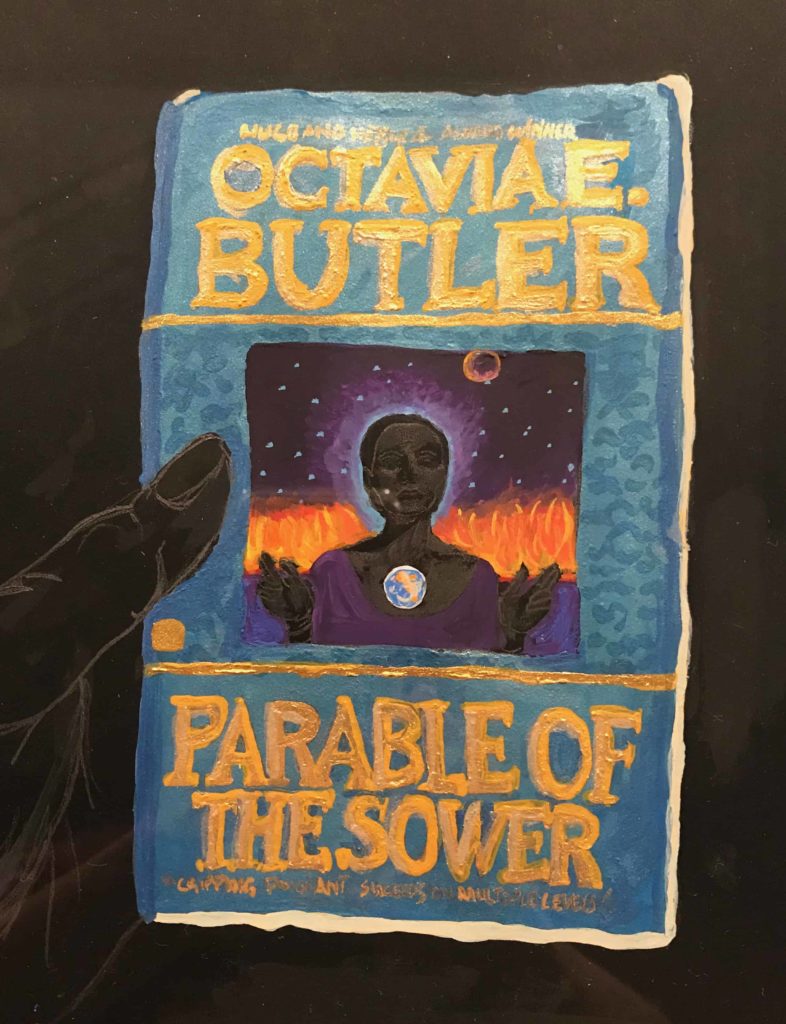
And then last a summer a fulbright TA came to stay with me for a few days, and we walked into the museum by chance on a free community day in August.
The galleries were full, and we walked together into the Cauleen Smith exhibit. I had seen the group of films here earlier in the summer, and they had stayed with me. A house full of friends dance at a party on a warm night, moving freely from inside to outside and choosing records for the gramaphone. In another film, parents sit talking as their daughter plays outside.
But watching them again with my new friend changed them for me. We realized we were seeing the same young woman at different times in her life, and she was learning to be confident in her mind and body, in a world that often worked against her.
We saw her in the last film standing barefoot on a river bank, talking with a young man she loves about how it feels to live in a country not long out of colonial control when you are among the first generation to come of age free of it.
‘I want to talk about us,’ he tells her, ‘and explore this country and new life, different from out parents. But let’s not lose our song. Keep your ear close to my chest a minute. Listen.’
This place makes connections. Things begin here, consciously and unconsciously. My friend is a TA in Arabic, and I had been talking with her about the language, and thinking I wanted to know more about it. That week I made a choice.
Mass MoCA, you have given me many things over the years. You have given me conversations with artists on long nights, and a place to play with the music jam at the café on Saturday mornings, and chocolate almond ice cream. Now you’ve led me to a new language too.

